 W
WThe 1st Filipino Infantry Regiment was a segregated United States Army infantry regiment made up of Filipino Americans from the continental United States and a few veterans of the Battle of the Philippines that saw combat during World War II. It was formed and activated at Camp San Luis Obispo, California, under the auspices of the California National Guard. Originally created as a battalion, it was declared a regiment on 13 July 1942. Deployed initially to New Guinea in 1944, it became a source of manpower for special forces and units that would serve in occupied territories. In 1945, it deployed to the Philippines, where it first saw combat as a unit. After major combat operations, it remained in the Philippines until it returned to California and was deactivated in 1946 at Camp Stoneman.
 W
WAmerica Is in the Heart, sometimes subtitled A Personal History, is a 1946 semi-autobiographical novel written by Filipino American immigrant poet, fiction writer, short story teller, and activist, Carlos Bulosan. The novel was one of the earliest published books that presented the experiences of the immigrant and working class based on an Asian American point of view and has been regarded as "[t]he premier text of the Filipino-American experience." In his introduction, journalist Carey McWilliams, who wrote a 1939 study about migrant farm labor in California, described America Is in the Heart as a “social classic” that reflected on the experiences of Filipino immigrants in America who were searching for the “promises of a better life”.
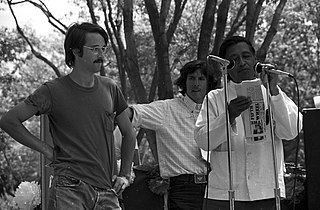 W
WThe Delano grape strike was a labor strike organized by the Agricultural Workers Organizing Committee (AWOC), a predominantly Filipino and AFL-CIO-sponsored labor organization, against table grape growers in Delano, California to fight against the exploitation of farm workers. The strike began on September 8, 1965, and one week later, the predominantly Mexican National Farmworkers Association (NFWA) joined the cause. In August 1966, the AWOC and the NFWA merged to create the United Farm Workers (UFW) Organizing Committee.
 W
WHistoric Filipinotown is a neighborhood in the city of Los Angeles. It is one of the five Asian Pacific Islander neighborhoods in the city.
 W
WThe history of Filipino Americans begins in the 16th century when Filipinos first arrived in what is now the United States. The first Filipinos came to what is now the United States due to the Philippines being part of New Spain. Until the 19th century, the Philippines continued to be geographically isolated from the rest of New Spain in the Americas but maintained regular communication across the Pacific Ocean via the Manila galleon. Filipino seamen in the Americas settled in Louisiana, and Alta California, beginning in the 18th century. By the 19th century, Filipinos were living in the United States, fighting in the Battle of New Orleans and the American Civil War, with the first Filipino becoming a naturalized citizen of the United States before its end. In the final years of the 19th century, the United States went to war with Spain, ultimately annexing the Philippine Islands from Spain. Due to this, the History of the Philippines merged with that of the United States, beginning with the three-year-long Philippine–American War (1899-1902), which resulted in the defeat of the First Philippine Republic, and the attempted Americanization of the Philippines.
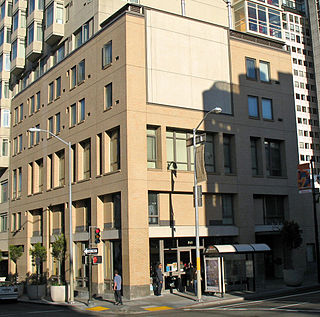 W
WThe International Hotel, often referred to locally as the I-Hotel, was a low-income single-room-occupancy residential hotel in San Francisco, California's Manilatown. It was home to many Asian Americans, specifically a large Filipino American population. Around 1954, the I-Hotel also famously housed in its basement Enrico Banduccci's original "hungry i" nightclub. During the late 60s, real estate corporations proposed plans to demolish the hotel, which would necessitate displacing all of the I-Hotel's elderly tenants. In response, housing activists, students, community members, and tenants united to protest and resist eviction. All the tenants were evicted on August 4, 1977 and the hotel was demolished in 1981. After the site was purchased by the International Hotel Senior Housing Inc., it was rebuilt and opened in 2005. It now shares spaces with St. Mary's School and Manilatown Center.
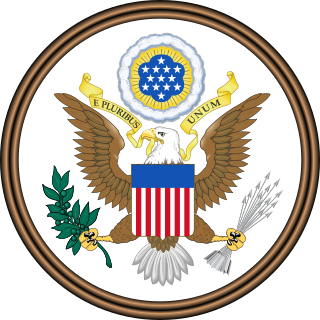 W
WThe Jones Law was an Organic Act passed by the United States Congress. The law replaced the Philippine Organic Act of 1902 and acted as a constitution of the Philippines from its enactment until 1934, when the Tydings–McDuffie Act was passed. The Jones Law created the first fully elected Philippine legislature.
 W
WOn 18 October 1587, the first Filipinos landed in what is now the Continental United States at Morro Bay in Upper California. They arrived aboard the Nuestra Señora de Buena Esperanza, which had sailed from Portuguese Macao, as part of the Manila galleon trade. During about three days of travels ashore around Morro Bay, the crew of the Nuestra Señora de Buena Esperanza came in contact with the Chumash people, ultimately resulting in the deaths of two crew members: one Spaniard and one Filipino.
 W
WA Little Manila lit: Bayan ng Maynila or Bayan ng Pilipino. is a community with a large Filipino immigrant and descendant population. Little Manilas are enclaves of Overseas Filipinos consisting of people of Filipino origin living outside of the Philippines. This term applies to Filipinos who are both abroad indefinitely as citizens or permanent residents of a different country, and to those Filipino citizens abroad for a limited, definite period, such as on a work contract or as students. It can also include seamen and others who work outside the Philippines, but are neither permanent nor temporary residents of another country.
 W
WThe Luce–Celler Act of 1946, Pub. L. No. 79-483, 60 Stat. 416, is an Act of the United States Congress which provided a quota of 100 Filipinos and 100 Indians from Asia to immigrate to the United States per year, which for the first time allowed these people to naturalize as American citizens. Upon becoming citizens, these new Americans could own property under their names and even petition for their immediate family members from abroad.
 W
WManila Village was a settlement of Filipino sailors, fishermen and laborers located on an island in Barataria Bay, in Jefferson Parish, Louisiana, United States. The settlements of Saint Malo in St. Bernard Parish was occupied by Filipino sailors who had jumped ship from their Spanish captains, near New Orleans in the year 1763. In later years, other Filipino countrymen arriving in port at Louisiana would also escape Spanish galleons. This group would later found the Manila Village settlement in the mid-19th century. The newly liberated sailors became fishermen who caught and dried shrimp for export to Asia, Canada, South America, and Central America. On July 24, 1870, the Spanish-speaking residents of St. Malo founded the first Filipino social club, called Sociedad de Beneficencia de los Hispano Filipinos, to provide relief and support for the group’s members, including the purchasing of burial places for their deceased. In 1938, the community had a population of 200 people, mostly Filipinos, but also Chinese, Mexicans, and Spaniards.
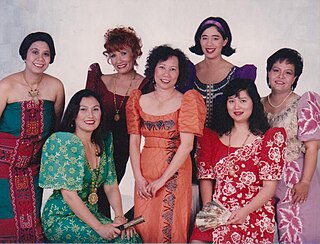 W
WPhilippine American Women Writers and Artists also known as PAWWA was founded in 1991 by a group of seven Filipina writers in Southern California. It was the first such support group for Filipina women writers. Aside from supporting one another, the group wanted to help other Filipina writers and artists, as well as to provide community service. PAWWA encouraged the creation of PAWWA-North, headed by Ceres Alabado in the Bay Area, California.
 W
WThe Philippine Independence Day Parade takes place annually in the United States along Madison Avenue in the Manhattan borough of New York City. The parade is held on the first Sunday in June. Its main purpose is to create awareness of Philippine culture and to raise funds for charity projects in the Philippines and the United States.
 W
WThe Philippine Organic Act was a basic law for the Insular Government that was enacted by the United States Congress on July 1, 1902. It is also known as the Philippine Bill of 1902 and the Cooper Act, after its author Henry A. Cooper. The approval of the act coincided with the official end of the Philippine–American War.
 W
WThe Philippine Scouts was a military organization of the United States Army from 1901 until after the end of World War II. These troops were generally Filipinos and Filipino-Americans assigned to the United States Army Philippine Department, under the command of American commissioned officers. Philippine Scout units were given the suffix "(PS)", to distinguish them from other U.S. Army units.
 W
WPhilippine Republic Day, also known as Philippine–American Friendship Day, is a commemoration in the Philippines held annually on July 4. It was formerly an official holiday designated as Independence Day, celebrating the signing of the Treaty of Manila, which granted Philippine independence from the United States of America in 1946.
 W
WSaint Malo was a small fishing village that existed along the shore of Lake Borgne in St. Bernard Parish, Louisiana as early as the mid-eighteenth century until it was destroyed by the 1915 New Orleans hurricane. Located along Bayou Saint Malo, about 6 miles (9.7 km) east of the Isleño fishing village of Shell Beach, it was the first permanent settlement of Filipinos and perhaps the first Asian-American settlement in the United States.
 W
WThe Stedman–Thomas Historic District encompasses what was historically the southern portion of Ketchikan, Alaska. It extends along Stedman and Thomas Streets, from Ketchikan Creek in the north to East Street in the south, and includes a few properties on adjacent spur side streets. In the early days of the city, the area was a seasonal Native fishing camp just south of the creek, but the Alaskan gold rushes around the turn of the 20th century brought an influx of settlers to the area.
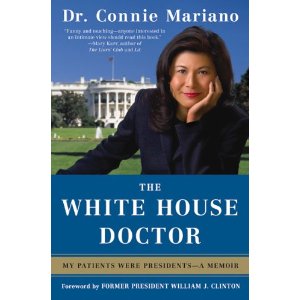 W
WThe White House Doctor: My Patients Were Presidents – A Memoir is a book authored by Connie Mariano, the first military woman in the history of the United States to be appointed as Physician to the President, the first female director of the medical unit of the White House, and the first Filipino-American to become a rear admiral in the US Navy. With a foreword from Bill Clinton, the autobiographical book takes a look at the personal lives of three American Presidents and three American First Ladies she had taken care of while working as a White House physician. It was described as a "fascinating look into what goes on behind closed doors at 1600 Pennsylvania Avenue".